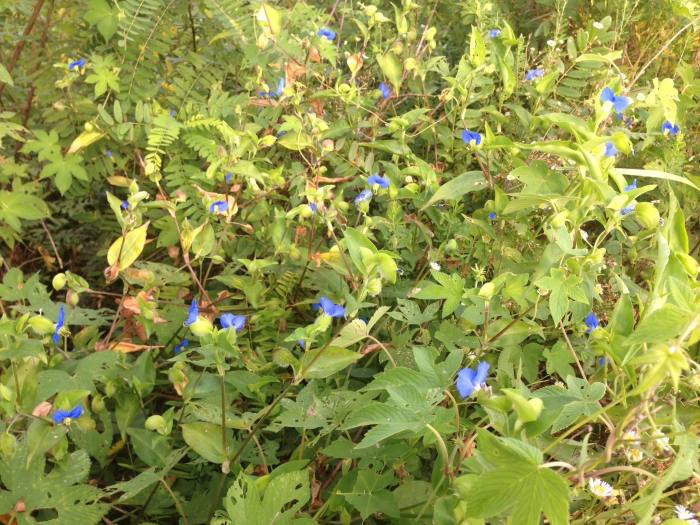Asiatic Dayflower
(Commelina communis)
Asiatic Dayflower (Commelina communis)
/
/

Kim, Hyun-tae
CC BY 4.0
Image By:
Kim, Hyun-tae
Recorded By:
Copyright:
CC BY 4.0
Copyright Notice:
Photo by: Kim, Hyun-tae | License Type: CC BY 4.0 | License URL: http://creativecommons.org/licenses/by/4.0/ | Rights Holder: Kim, Hyun-tae | Publisher: iNaturalist | Date Created: 2016-08-20T00:36:14Z |













Estimated Native Range
Summary
Commelina communis, commonly known as Asiatic dayflower, is an annual herb that is native to moist and shaded environments in East Asia and Southeast Asia, including forest edges, grasslands, and along streams. It is characterized by its sprawling habit, reaching up to 12 inches (30 cm) in height, with distinctive bright blue flowers that bloom from summer to early autumn. The flowers are ephemeral, typically lasting for just one day, but they are quite showy and can add a splash of color to the garden. The plant also features a pair of heart-shaped leaves at the base of each flower.
Asiatic dayflower is appreciated for its vibrant flowers and can be used as a ground cover in shaded garden areas. It is relatively easy to maintain, requiring moist soil and partial to full shade. While it can be an attractive addition to the garden, it is important to be aware of its invasive potential outside its native range. In some regions, it can spread rapidly and outcompete native plants. Gardeners should manage its growth carefully and ensure it does not escape cultivation.CC BY-SA 4.0
Asiatic dayflower is appreciated for its vibrant flowers and can be used as a ground cover in shaded garden areas. It is relatively easy to maintain, requiring moist soil and partial to full shade. While it can be an attractive addition to the garden, it is important to be aware of its invasive potential outside its native range. In some regions, it can spread rapidly and outcompete native plants. Gardeners should manage its growth carefully and ensure it does not escape cultivation.CC BY-SA 4.0
Plant Description
- Plant Type: Herb
- Height: 1-3 feet
- Width: 2-10 feet
- Growth Rate: Rapid
- Flower Color: Blue
- Flowering Season: Summer, Fall
- Leaf Retention: Deciduous
Growth Requirements
- Sun: Full Sun, Part Shade
- Water: Medium
- Drainage: Medium
Common Uses
Groundcover, Low Maintenance
Natural Habitat
Moist and shaded environments in East Asia and Southeast Asia, including forest edges, grasslands, and along streams
Other Names
Common Names: Mouse Ears, Common Dayflower
Scientific Names: , Commelina communis, Commelina communis f. alba, Commelina communis f. aureostriata, Commelina vulgaris,
GBIF Accepted Name: